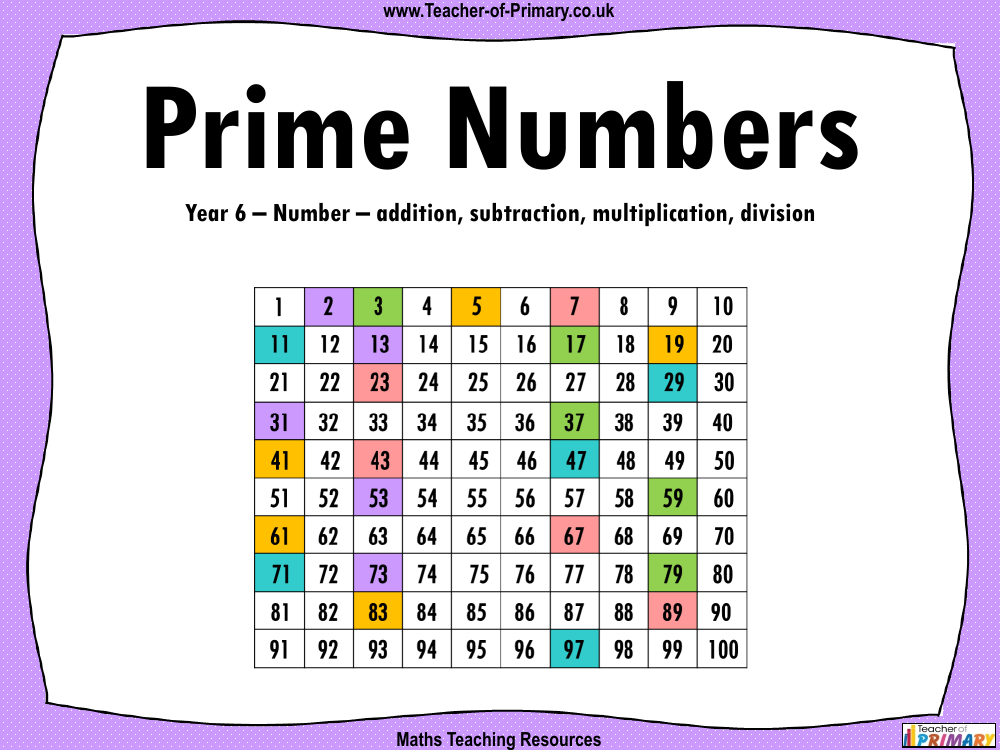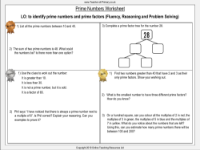Prime Numbers - PowerPoint

Maths Resource Description
The comprehensive PowerPoint presentation for Year 6 pupils delves into the fascinating world of prime numbers, aiming to help students identify these unique numbers, break down other numbers into prime factors, and enhance their reasoning and problem-solving abilities. A prime number is defined as a positive whole number with exactly two factors: one and the number itself. Examples include 3, 5, and 7. In contrast, composite numbers have more than two factors and thus are not prime. The presentation also introduces the concept of prime factors, which are prime numbers that multiply together to form the original number, such as 3 and 5 being the prime factors of 15.
An interesting fact highlighted in the resource is that 2 is the only even prime number, as all other even numbers can be divided by 2. It also clarifies why the number 1 is not considered a prime number: it can only be divided by itself and not by two different numbers, which is a requirement for prime numbers. Students are encouraged to list the first 10 prime numbers and to use a prime factor tree to break down numbers such as 18 and 12 into their prime factors. The resource includes engaging exercises where students can apply their knowledge to solve various problems, such as finding the sum of two prime numbers or completing prime factor trees, and it encourages them to verify that their final answers are indeed prime numbers.

